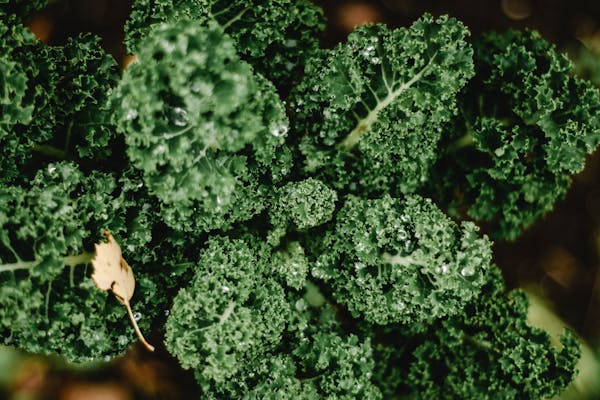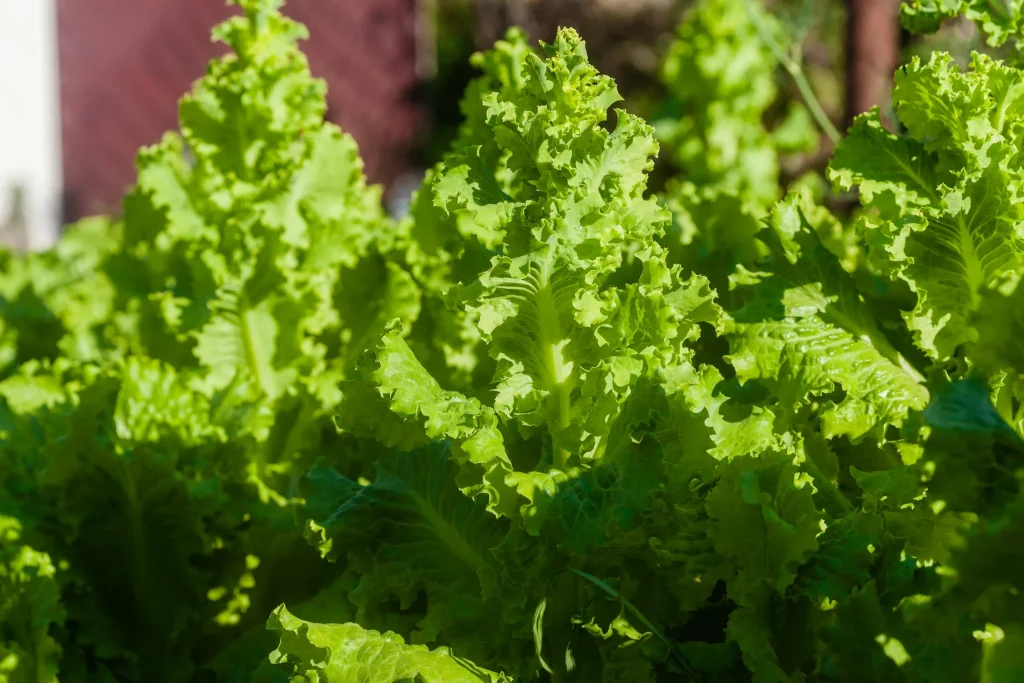Can Cats Eat Kale ?
Yes, cats can eat kale in moderation as an occasional treat. Kale is a nutrient-dense leafy green vegetable that is non-toxic to cats and can provide some health benefits. It is a good source of vitamins A, C, and K, as well as minerals like calcium and iron. However, kale should not be a significant part of a cat’s diet, as cats are obligate carnivores and require a meat-based diet to meet their nutritional needs. Kale should be introduced gradually and in small amounts to monitor for any potential digestive issues or allergic reactions. It’s always best to consult with a veterinarian before making significant dietary changes for your feline companion. Read Also can cats eat coconut

Introduction to Kale:
Kale is a nutrient-dense leafy green vegetable that belongs to the brassica family, which includes broccoli, cauliflower, and cabbage. It is a cruciferous vegetable that has been cultivated for centuries and is native to the Mediterranean region. Kale comes in several varieties, each with its own unique appearance and flavor profile. The most common types are curly kale, lacinato (dinosaur) kale, and ornamental kale.
Curly kale is the most widely available variety, with its ruffled, green leaves and sturdy stems. It has a slightly peppery taste and holds its texture well when cooked. Lacinato kale, also known as dinosaur kale, has long, narrow, dark green leaves with a slightly sweeter and more delicate flavor. Ornamental kale, often grown for its vibrant color and decorative appearance, is edible but tends to be tougher and more bitter in taste. Read Also can cats eat broccoli
Kale is an excellent source of various vitamins and minerals, including vitamins A, C, and K, as well as calcium, iron, and magnesium. It is also rich in antioxidants, such as carotenoids and flavonoids, which help protect the body from oxidative stress and inflammation. Additionally, kale is a good source of fiber, which can aid in digestion and promote a healthy gut.
Is Kale Toxic To Cats?
Kale is not toxic to cats and can provide them with some essential nutrients. However, it is important to remember that cats are obligate carnivores, meaning their diet should primarily consist of animal-based proteins and fats. Their digestive systems are not well-adapted to digest large amounts of plant-based foods like kale.

Introducing kale gradually and in small amounts can help your cat’s body adjust to this new food source. It’s essential to monitor your cat’s reaction and adjust the quantity accordingly. Some cats may enjoy the taste and texture of kale, while others may be indifferent or even averse to it.
Benefits of Kale for Cats:
While a cat’s diet should primarily consist of high-quality, meat-based cat food, kale can offer some potential health benefits when fed in moderation as an occasional treat. Here are some potential benefits of kale for cats:
- Fiber: Kale is a good source of dietary fiber, which can aid in digestion and prevent constipation in cats. Fiber helps to regulate bowel movements and promote a healthy digestive system.
- Antioxidants: Kale is rich in antioxidants like vitamin C, vitamin K, and carotenoids (such as lutein and zeaxanthin), which can help protect cells from damage caused by free radicals. Antioxidants play a crucial role in supporting the immune system and preventing various diseases.
- Vitamins and minerals: Kale contains essential vitamins and minerals, such as vitamin A, vitamin C, vitamin K, calcium, and iron, which can support various bodily functions in cats. These nutrients are important for maintaining healthy skin, fur, vision, and bone development.
- Hydration: Kale has a high water content, which can help keep cats hydrated, especially during warm weather or if they are prone to dehydration. Proper hydration is essential for overall health and well-being.
- Low in calories: Kale is low in calories, making it a potential treat option for overweight or obese cats when given in moderation. It can provide a satisfying crunch and flavor without contributing excessive calories.
- Potential anti-inflammatory properties: Some studies suggest that the compounds found in kale, such as sulforaphane and indole-3-carbinol, may have anti-inflammatory properties, which could potentially benefit cats with certain inflammatory conditions.
How Much Kale Can Cats Eat?
When introducing kale to your cat’s diet, it’s crucial to start with small amounts and monitor their reaction closely. As a general guideline, cats should not consume more than 10-15% of their daily caloric intake from treats and supplemental foods like kale. For an average-sized cat, this would translate to no more than a few leaves or a small handful of kale per day.
It’s essential to introduce kale gradually and adjust the amount based on your cat’s individual tolerance and preferences. Some cats may enjoy and tolerate larger amounts of kale, while others may experience digestive issues or disinterest even with small portions. Read Also can cats have autism
How to Feed Kale to Cats:
If you decide to feed kale to your cat, it’s important to introduce it properly to ensure their safety and acceptance. Here are some tips for feeding kale to cats:
- Wash and chop the kale into small pieces or shreds to make it easier for your cat to eat and digest.
- You can offer the kale raw or lightly steamed to make it more palatable and easier to digest. Steaming can also help to break down some of the tough fibers in kale.
- Mix a small amount of kale with your cat’s regular wet or dry food to encourage them to try it. Cats are more likely to accept new foods when they are mixed with their familiar and preferred meals.
- Gradually increase the amount of kale if your cat seems to enjoy and tolerate it well. Monitor their reaction and adjust the quantity accordingly.
- Avoid feeding kale seasoned with salt, spices, or other seasonings, as these can be harmful to cats and may cause digestive issues or other health problems.
- Always provide fresh water to help with digestion and hydration, especially when introducing new foods like kale.
- Consider offering kale as a crunchy treat or topping on their regular food to make it more appealing and enjoyable for your cat.
Risks Associated With Kale:
While kale can be a healthy occasional treat for cats, there are some potential risks to be aware of:
- Digestive issues: Since cats are obligate carnivores, their digestive systems are not well-equipped to handle large amounts of plant-based foods like kale. Consuming too much kale can lead to digestive issues such as vomiting, diarrhea, or constipation. This is particularly true if the kale is introduced too quickly or in excessive quantities.
- Oxalate content: Kale contains oxalates, which are naturally occurring compounds that can bind to certain minerals like calcium and iron, potentially interfering with their absorption. High levels of oxalates can also contribute to the formation of kidney stones in some cases, although this risk is generally low for cats when kale is fed in moderation.
- Choking hazard: Kale leaves and stems can be tough and fibrous, potentially posing a choking hazard for cats if not chopped or shredded properly. It’s essential to prepare kale in a way that makes it easy for your cat to chew and swallow.
- Pesticide residue: If the kale is not organically grown, it may contain pesticide residues that could be harmful if consumed in large quantities. It’s recommended to choose organic kale whenever possible or thoroughly wash non-organic kale before feeding it to your cat.
- Nutrient imbalances: While kale is a nutrient-dense vegetable, relying on it as a significant part of a cat’s diet can lead to nutrient imbalances and deficiencies, as it lacks the complete nutritional profile that cats require. Kale should only be fed as an occasional treat and not as a substitute for a balanced, meat-based diet.
- Allergic reactions: Some cats may be allergic or sensitive to certain compounds found in kale, leading to potential allergic reactions such as skin irritation, respiratory issues, or gastrointestinal distress. It’s important to monitor your cat closely when introducing new foods and discontinue feeding kale if any adverse reactions occur.
Doctor’s Insight (Dr. Ibrahim):
“While kale can be a healthy occasional treat for cats, it’s crucial to remember that their primary diet should consist of high-quality, meat-based cat food. Kale should only be introduced in small amounts and gradually to avoid digestive issues. If you notice any adverse reactions, such as vomiting, diarrhea, or loss of appetite, discontinue feeding kale and consult your veterinarian immediately. It’s also essential to ensure that your cat stays well-hydrated when introducing new plant-based foods like kale to their diet.”
Doctor’s Insight (Dr. Hanan):
“Kale can be a valuable source of nutrients like vitamins A, C, and K for cats, as well as antioxidants and fiber. However, it’s important to monitor the portion sizes and ensure it doesn’t exceed 10-15% of their daily caloric intake. Additionally, pay close attention to potential signs of oxalate buildup, such as difficulty urinating or the formation of crystals in the urine, or digestive discomfort, and adjust the amount of kale accordingly. Cats with pre-existing kidney or urinary issues may need to avoid kale altogether due to its oxalate content.” Read Also can cats eat broccoli
Final Thoughts:
Kale can be a healthy occasional treat for cats when introduced gradually and in moderation. Its nutrient-dense composition can offer some potential benefits, such as providing fiber, antioxidants, vitamins, and minerals. However, it should not replace their regular, balanced, meat-based diet, as cats are obligate carnivores and require a specific nutritional profile to thrive.
When feeding kale to your cat, it’s essential to observe their reaction closely and adjust the quantity accordingly. Some cats may readily accept and enjoy kale, while others may be indifferent or even experience digestive issues. If you notice any adverse effects, discontinue feeding kale and consult with your veterinarian.
It’s also crucial to ensure that the kale is properly washed, chopped or shredded, and prepared in a way that minimizes potential risks, such as choking hazards or pesticide residue.
Faq Section About Can Cats Eat Kale
Are vegetables good for cats?
Vegetables are not an essential part of a cat’s diet, as they are obligate carnivores. However, some vegetables can provide additional nutrients and fiber when fed in moderation as an occasional treat.
How much vegetable can I give my cat?
Vegetables should not make up more than 10-15% of a cat’s daily caloric intake. For an average-sized cat, this translates to a few small pieces or a handful of vegetables per day. It’s important to introduce new vegetables gradually and monitor for any digestive issues.
Read Also


